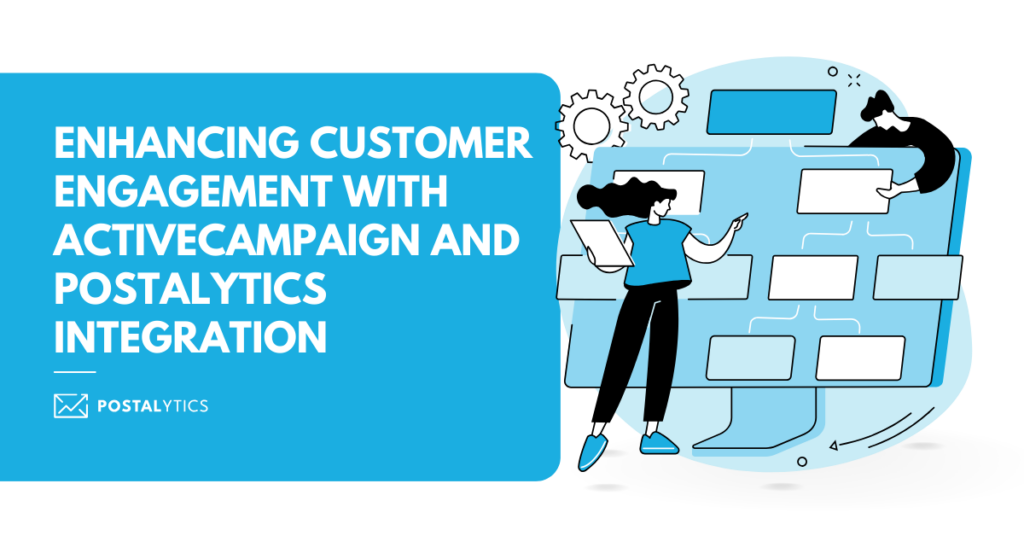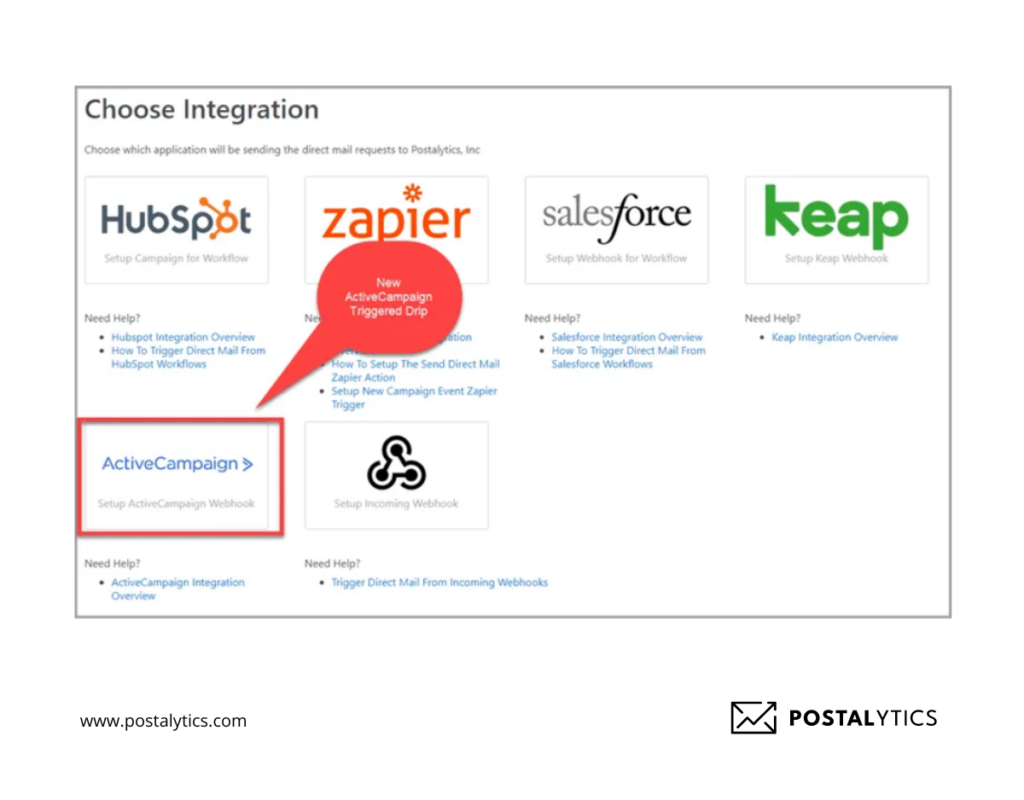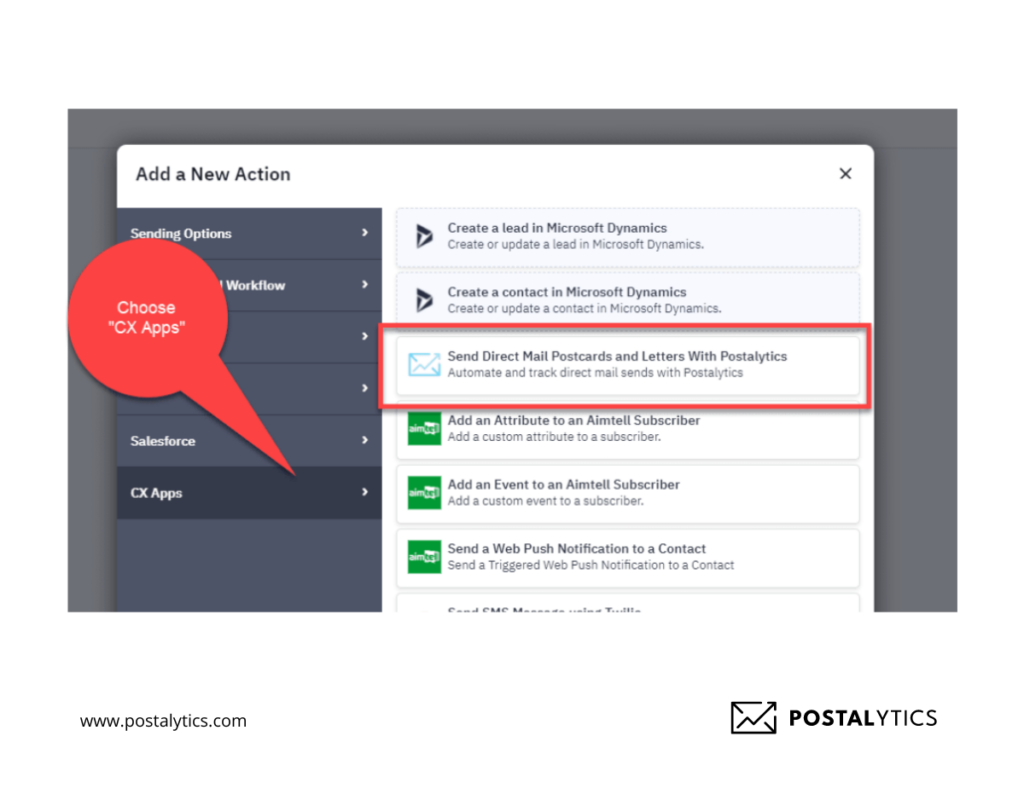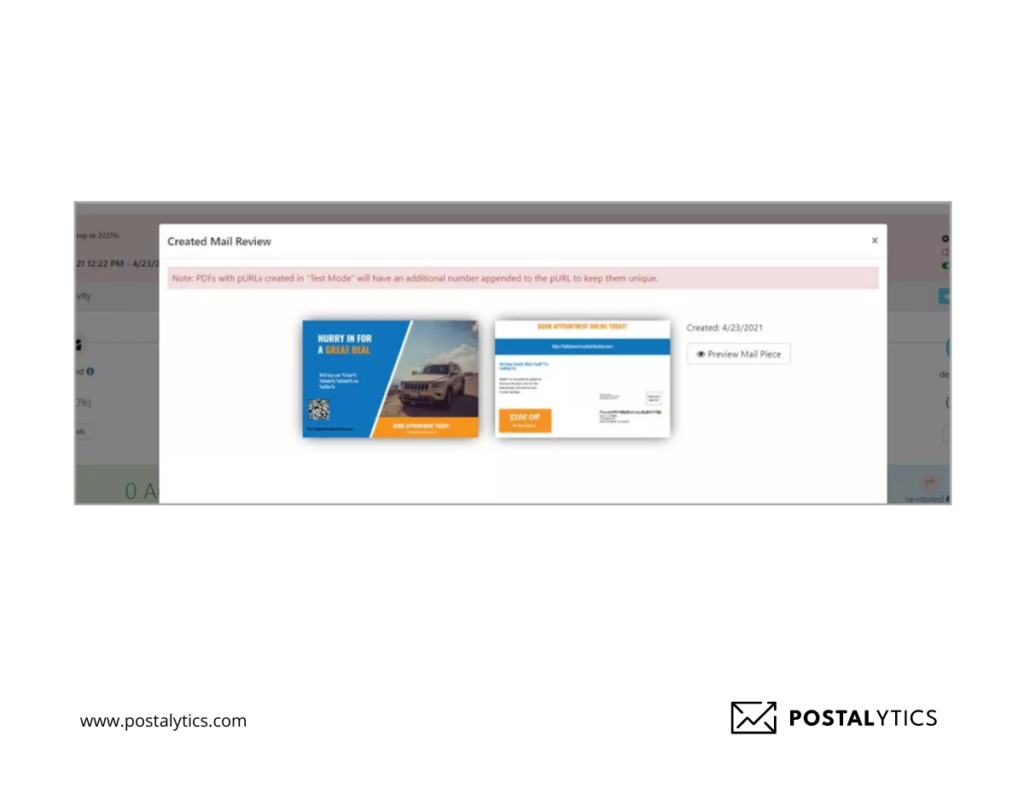
ActiveCampaign and Postalytics have created a platform for businesses to manage their marketing activities seamlessly.
With direct marketers always looking for efficient and effective ways to create and manage campaigns, ActiveCampaign-Postalytics integration gives them the best of both worlds.
Unsure of how to use the integration to enhance customer engagement and experience? In this guide, we bring you the best strategies you can implement immediately.
Table of Contents
- How Does ActiveCampaign and Postalytics Integration Work?
- How Does ActiveCampaign Postalytics Integration Impact Customer Engagement?
- Case Study: How Zogics Engaged Previous Customers Who Had Gone Quiet on Email
- Best Practices for Maximizing Customer Engagement with Direct Mail Integration
- Elevate Direct Marketing With Postalytics
How Does ActiveCampaign and Postalytics Integration Work?
The best part about ActiveCampaign and Postalytics integration is that it’s readily available in any plans of these platforms. Here’s how you can set it up in three simple steps:
1. Create a Postalytics-triggered drip campaign by choosing the option with ActiveCampaign integration.

2. Connect Postalytics by clicking on CX Apps. Add the authorization header, pick the triggered drip campaign you set up, and map the data fields according to you requirements.

3. Turn on ActiveCampaign automation and test by setting up PDFs of actual mail pieces before you deploy your campaigns.

Once you follow all the steps, you’ll need credits in your Postalytics account to move this campaign to Live mode.
You can also experiment with the integration and try different ways of triggering campaigns to see which delivers the best results.
How Does ActiveCampaign Postalytics Integration Impact Customer Engagement?
ActiveCampaign Postalytics customer engagement integration helps businesses build relationships with their customers and keep retaining them.
Here are seven strategies direct marketers often adopt along with this integration.
1. Enhance targeting and segmentation
The ActiveCampaign Postalytics integration enhances targeting and segmentation by synchronizing contact data, leveraging behavioral triggers, and enabling advanced segmentation.
For example, you can create lists in ActiveCampaign contacts that you can use for your direct mail campaigns. This allows you to create targeted campaigns for each list and increase conversions.
One of our clients, J.M. Sells Law, used Postalytics to trigger personalized campaigns instead of relying on generic ones. They also ensured the mail was sent to the right audience at the right time. This approach brought them a 5% response rate and a 75% conversion rate.
2. Create personalized direct mail campaigns
Marketers can elevate personalization with the ActiveCampaign Postalytics integration by merging both platforms’ features. They can utilize ActiveCampaign’s segmentation to target specific groups and trigger direct mail via Postalytics based on customer behavior.
Postalytics offers advanced personalization tools like variable data and logic, allowing marketers to tailor content dynamically. For example, using variable logic, you can showcase different images for different mailing lists.
Additionally, personalized URLs (pURLs) provide individualized web experiences. By leveraging these tools, marketers can create highly customized campaigns that resonate with recipients on a personal level. This personalization boosts customer engagement as recipients feel valued and understood.
3. Have seamless data synchronization
The integration facilitates effortless data synchronization between marketing automation and direct mail tools. It ensures customer data, including preferences and engagement metrics, remains current and aligned across platforms.
This seamless synchronization enables businesses to create campaigns with accurate customer information, ensuring targeted messaging and personalized experiences. For example, marketers can use customer preference data available in ActiveCampaign to create campaigns that hit the mark. This could mean increasing orders by sharing discount coupons via direct mail to price-sensitive customers or sending holiday campaigns to those customers who actively shop during this season.
4. Set up automated triggers
Businesses can automate workflows and trigger direct mail campaigns based on precise customer behaviors or events captured in ActiveCampaign. By seamlessly connecting the two platforms, marketers can set up automated triggers that respond to specific actions or milestones in the customer journey.
For example, a customer signs up for a newsletter or demonstrates interest in a product. ActiveCampaign can automatically trigger a direct mail campaign through Postalytics. This ensures timely and targeted communication with customers. It also has a direct impact on enhancing engagement and driving conversions.
5. Target email non-openers
Marketers understand that relying on one channel for customer engagement hardly ever works. You need to engage them on channels where they’re most active and likely to respond. Businesses can combine email and execute multi-channel campaigns using ActiveCampaign-Postalytics integration.
For example, you can coordinate email and direct mail campaigns that complement each other, ensuring consistent messaging and maximizing reach and impact.
AZ Nutrition Center did the same when they found out that using just email was causing them to lose contact with a portion of their customer base. Instead of manually conducting every activity, they resorted to Postalytics. They successfully reconnected with lapsed email subscribers and boosted ROI by 30%.
6. Track campaigns
Postalytics offers robust campaign tracking capabilities, allowing marketers to monitor campaigns at every stage and sync data with event codes. You can track metrics such as delivery, open rates, and responses, providing real-time insights into campaign performance.
Marketers can track specific stages like pURL opened or mail piece delivered by integrating event codes. This tracking functionality enables marketers to stay informed about campaign progress and effectiveness.
For instance, if a campaign is underperforming, the team can quickly identify issues and take corrective action, such as adjusting messaging or targeting.
7. Automate engagement campaigns
Businesses can automate engagement campaigns through the ActiveCampaign Postalytics integration, targeting various touchpoints in the customer journey. This includes personalized birthday cards, replenishment reminders, cross-selling opportunities, and more.
By leveraging data from ActiveCampaign automations, marketers can trigger direct mail campaigns based on specific customer behaviors or events. For example, an e-commerce retailer can automatically send customers a personalized birthday card with a special discount on their birthday, fostering loyalty and driving repeat purchases.
These automated campaigns keep nurturing leads and retaining customers by delivering personalized experiences and staying top-of-mind.
Case Study: How Zogics Engaged Previous Customers Who Had Gone Quiet on Email
Zogics, an ecommerce company, wanted to reactivate previous clients who had gone quiet on email. They turned to direct mail as they thought it could be a powerful avenue to reach these customers.
They triggered an automated direct mail campaign from Postalytics. The best part was they could track the campaign’s success without doing any manual work.

“Using Postalytics status codes, such as ‘Mail in Transit’ & ‘Processed for Delivery’ helps us time our messaging much more accurately within workflows. This allows us to create multi-touch campaigns with our contacts that have logical and appropriate cadences between emails, follow-up, and postcard mailings.”
The result was a 500% increase in ROI and an order volume increase of 140%.
Best Practices for Maximizing Customer Engagement with Direct Mail Integration
As well as the strategies mentioned above, here are four best practices that have been tried and tested by direct marketers to drive maximum engagement with customers:
- Interactive direct mail: Incorporate interactive elements into your direct mail pieces, such as QR codes, augmented reality, or scratch-off areas. These features encourage engagement and make the experience more memorable for recipients.
- Localized offers: Tailor your direct mail offers to specific geographic regions or neighborhoods. Use local landmarks, events, or cultural references to make the message more relevant for recipients in that area.
- Data quality: Ensure your customer data is accurate, up-to-date, and properly segmented. This ensures that your direct mail campaigns reach the right audience with relevant messaging.
- Compliance and consent: Ensure compliance with data privacy regulations and obtain consent from recipients before sending direct mail. Respect their preferences and provide easy opt-out options if they wish to unsubscribe from future communications.
Elevate Direct Marketing With Postalytics
Businesses need to engage their customers. Direct marketing is a great channel to nurture customers and keep them returning for more products and services.
With the strategies mentioned in the article, you’re all set to create great engagement campaigns for your customers using ActiveCampaign-Postalytics integration. To learn more about the benefits of this integration or Postalytics, get in touch with our team.
About the Author

Dennis Kelly
Dennis Kelly is CEO and co-founder of Postalytics. Dennis joined Boingnet, the predecessor to Postalytics, in 2013. Boingnet was focused on providing print and direct mail marketing service providers the ability to add digital marketing channels to their direct mail campaigns. Postalytics is Dennis’ 6th startup. He has been involved in starting and growing early-stage technology ventures for over 30 years and has held senior management roles at a diverse set of large technology firms including Computer Associates, Palm Inc. and Achieve Healthcare Information Systems.
